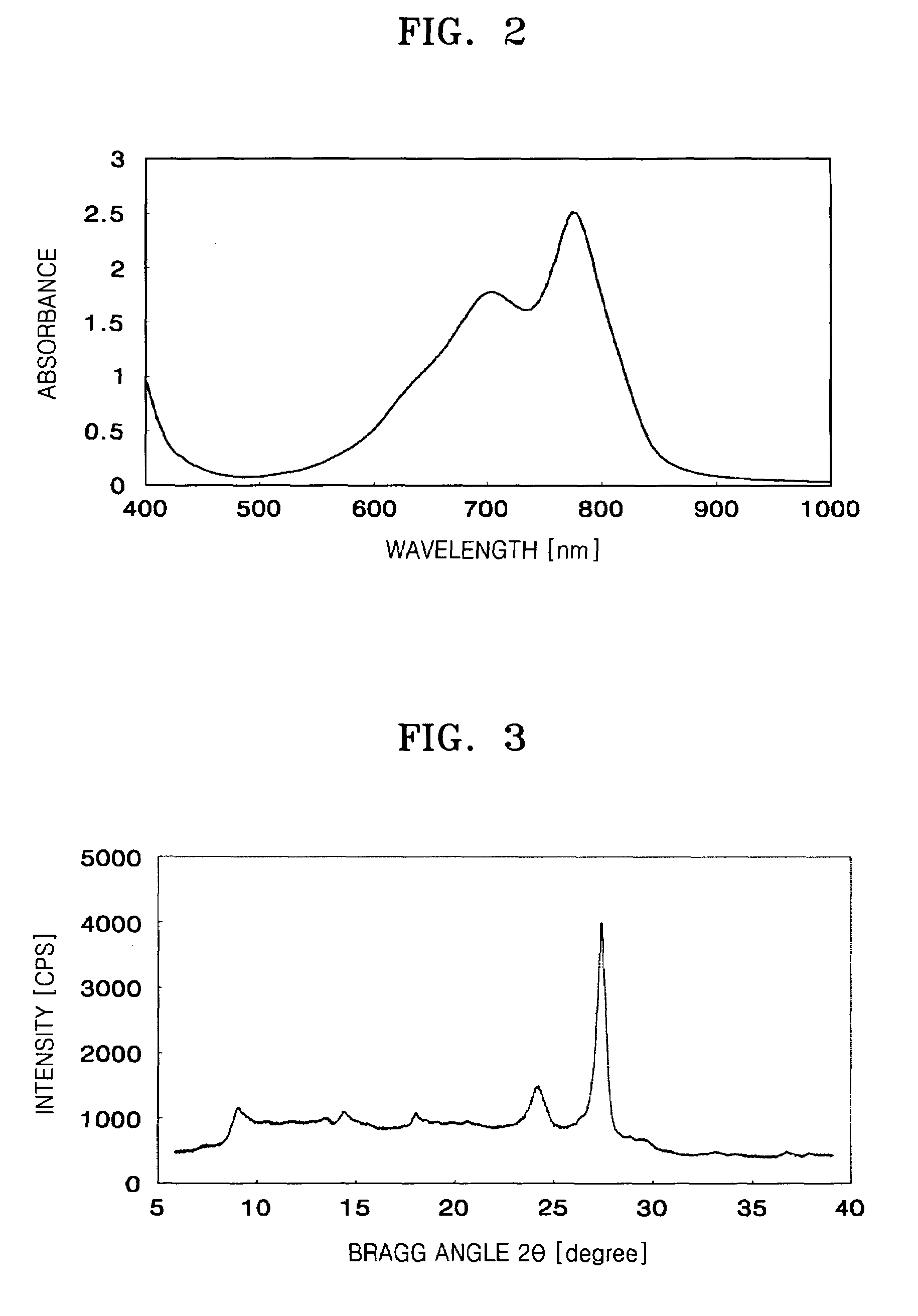Electrophotographic photoreceptor and electrophotographic imaging apparatus employing the photoreceptor
a photoreceptor and photoreceptor technology, applied in the direction of electrographic process apparatus, instruments, corona discharge, etc., can solve the problems of insufficient photosensitivity of the electrophotographic photoreceptor manufactured using the charge generating material, increased sensitivity of the photoreceptor, etc., to achieve good photosensitivity and stability over repeated charging, good electrostatic characteristics
- Summary
- Abstract
- Description
- Claims
- Application Information
AI Technical Summary
Benefits of technology
Problems solved by technology
Method used
Image
Examples
manufacturing example 1
[0085]2 parts of Y-type titanyl phthalocyanine which is synthesized according to the method disclosed in U.S. Pat. No. 4,898,799 and 1 part of polyvinyl butyral resin (“S-LEC BM-1”, available from Sekisui Chemical Co., Ltd.) were mixed with 5 parts of isopropyl alcohol and kneaded using a two-roll mill (R2-type available from Kodaira Seisakusho Co., Ltd). The obtained dispersion was dried in an oven at 100° C. for 1 hour and crushed to obtain a solid dispersion with a chip-like shape.
[0086]FIGS. 2 and 3 respectively illustrate the visible-infrared absorption spectrum and the X-ray diffraction spectrum of the present sample (using Cu Kαline). The absorption spectrum of FIG. 2 is obtained using a dilute dispersion sample in which the solid dispersion is dispersed in ethanol, and the X-ray spectrum of FIG. 3 is obtained by radiating Cu Kα line to the solid dispersion sample.
[0087]Referring to FIG. 2, the titanyl phthalocyanine crystal has a major absorption peak at a wavelength of arou...
example 1
[0089]A coating composition obtained by dissolving 4 parts of the solid dispersion obtained from Manufacturing Example 1 with 96 parts of ethanol was coated using a ring coating method on an anodized aluminum drum having a diameter of 30 mm and dried to form a charge generating layer to a thickness of about 0.4 μm. Then a solution in which 60 parts of polycarbonate resin Z (“lupilon Z-200”, available from Mitsubishi Gas Chemical) and 40 parts of distyryl Compound 1 below were dissolved in 300 parts of chloroform was coated thereon and was dried at 100° C. for 1 hour to form a charge transporting layer to a thickness of about 20 μm to obtain a laminated type electrophotographic photoreceptor.
[0090]
example 2
[0091]A laminated type electrophotographic photoreceptor was obtained in the same manner as in Example 1 except that distyryl Compound 2 below was used instead of distyryl Compound 1.
[0092]
PUM
 Login to View More
Login to View More Abstract
Description
Claims
Application Information
 Login to View More
Login to View More - R&D
- Intellectual Property
- Life Sciences
- Materials
- Tech Scout
- Unparalleled Data Quality
- Higher Quality Content
- 60% Fewer Hallucinations
Browse by: Latest US Patents, China's latest patents, Technical Efficacy Thesaurus, Application Domain, Technology Topic, Popular Technical Reports.
© 2025 PatSnap. All rights reserved.Legal|Privacy policy|Modern Slavery Act Transparency Statement|Sitemap|About US| Contact US: help@patsnap.com



